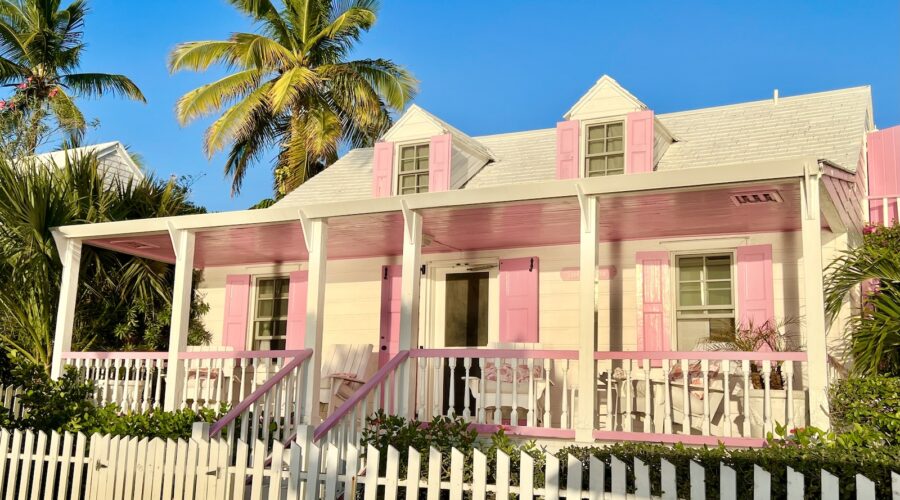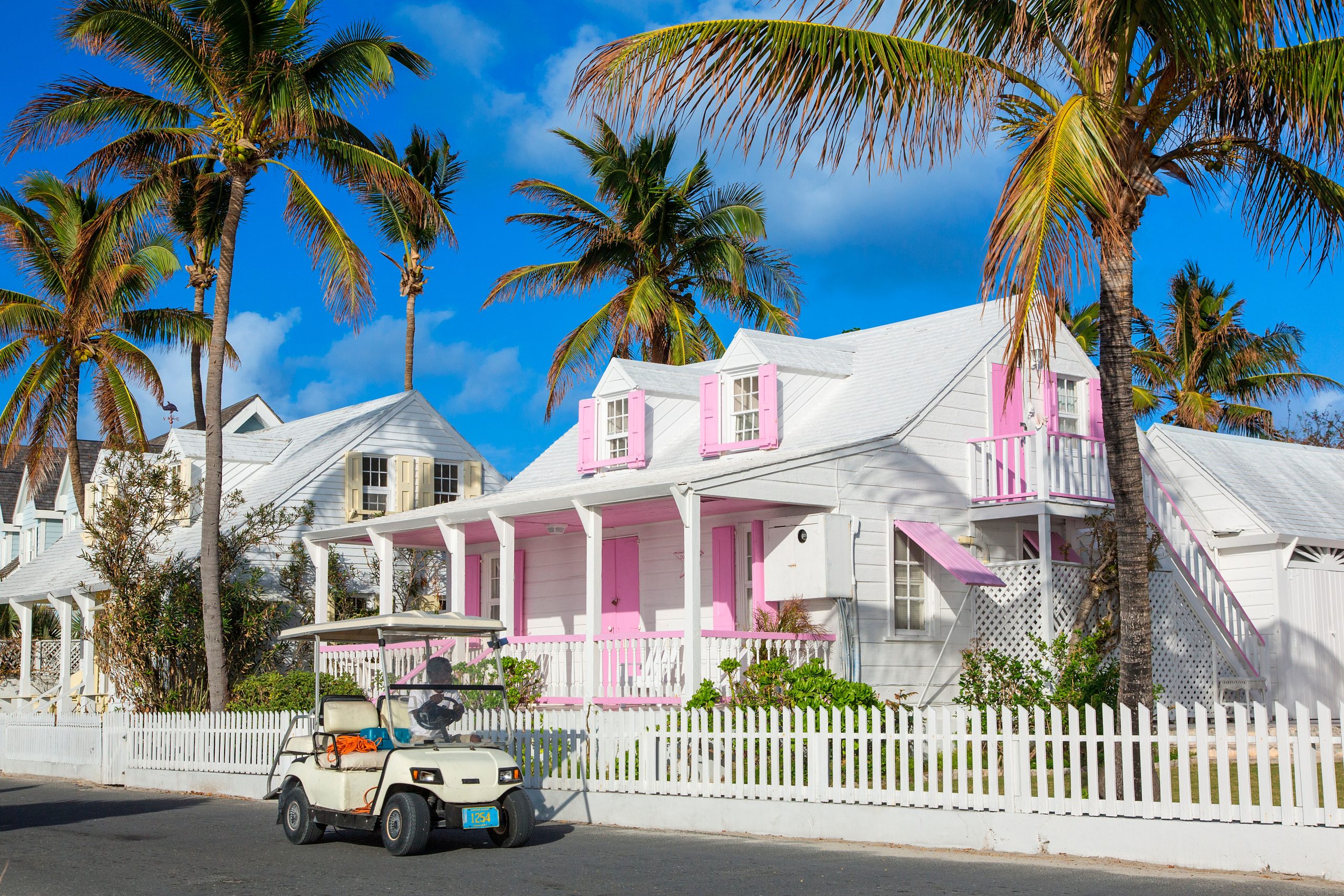

The story of Dunmore Town Harbour Island begins in the late 18th century, when it was named after Lord Dunmore, the Royal Governor of the Bahamas from 1787 to 1796. Its roots stretch further back to the mid-1600s, when English Puritans known as the Eleutheran Adventurers left Bermuda seeking religious freedom. This settlement later became a haven for British Loyalists fleeing the American Revolutionary War, bringing skilled craftsmanship, plantation culture, and architectural influences from both the American South and British colonies.
The colonial houses that line the streets of Dunmore Town Harbour Island were primarily built in the late 1700s and 1800s from Abaco pine and local limestone. They feature steep-pitched roofs, wraparound verandas, wooden shutters, and intricate fretwork inspired by British and Caribbean styles. Their pastel shades—pink, coral, turquoise, mint green, and yellow—were not only visually appealing but also practical, reflecting sunlight to keep interiors cool. Historically, lime-based paints mixed with natural pigments from plants, minerals, and shells gave these houses their distinct color. Bright exteriors also served as navigational aids for sailors spotting the shoreline from offshore.
In terms of Harbour Island history, Dunmore Town became a bustling hub for shipbuilding, fishing, and pineapple exports during the 19th century. The wealth from these industries supported the maintenance of the homes and ensured their preservation over centuries. Today, most are meticulously restored vacation homes, boutique hotels, and local residences. Preservation laws require that any new construction maintain the traditional architectural style, with wood siding, shutters, and pastel colors still the norm.
This commitment to maintaining its historic character has made the town one of the most intact colonial communities in the Bahamas. For those interested in Harbour Island history, it offers not just beautiful architecture but also a living connection to the island’s cultural roots. The combination of Loyalist heritage, maritime traditions, and vibrant island spirit makes Dunmore Town one of the most photographed and celebrated small towns in the Caribbean.